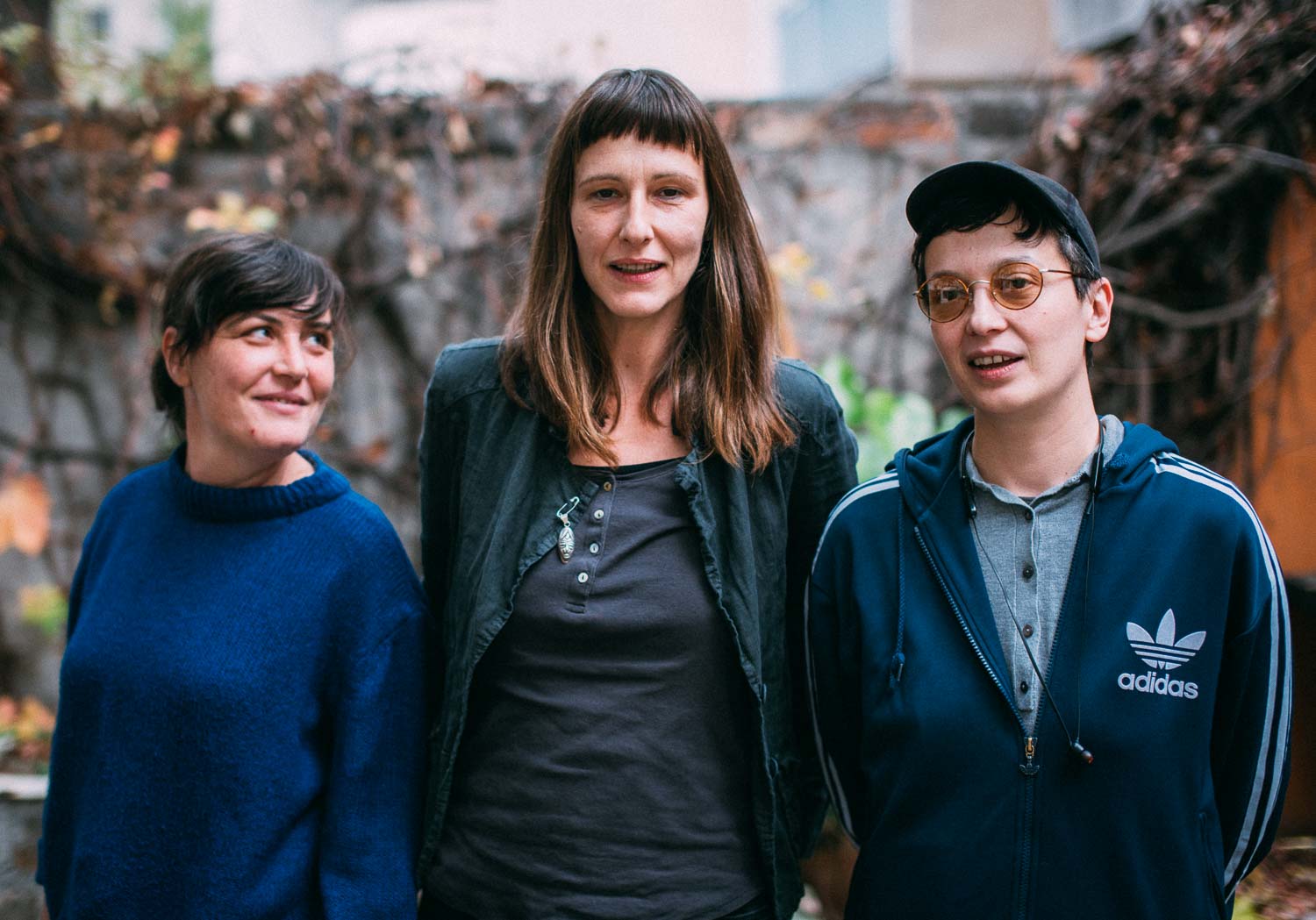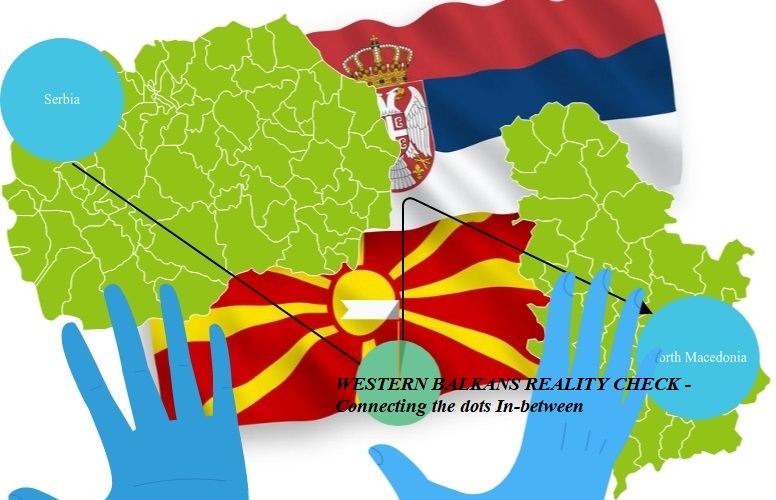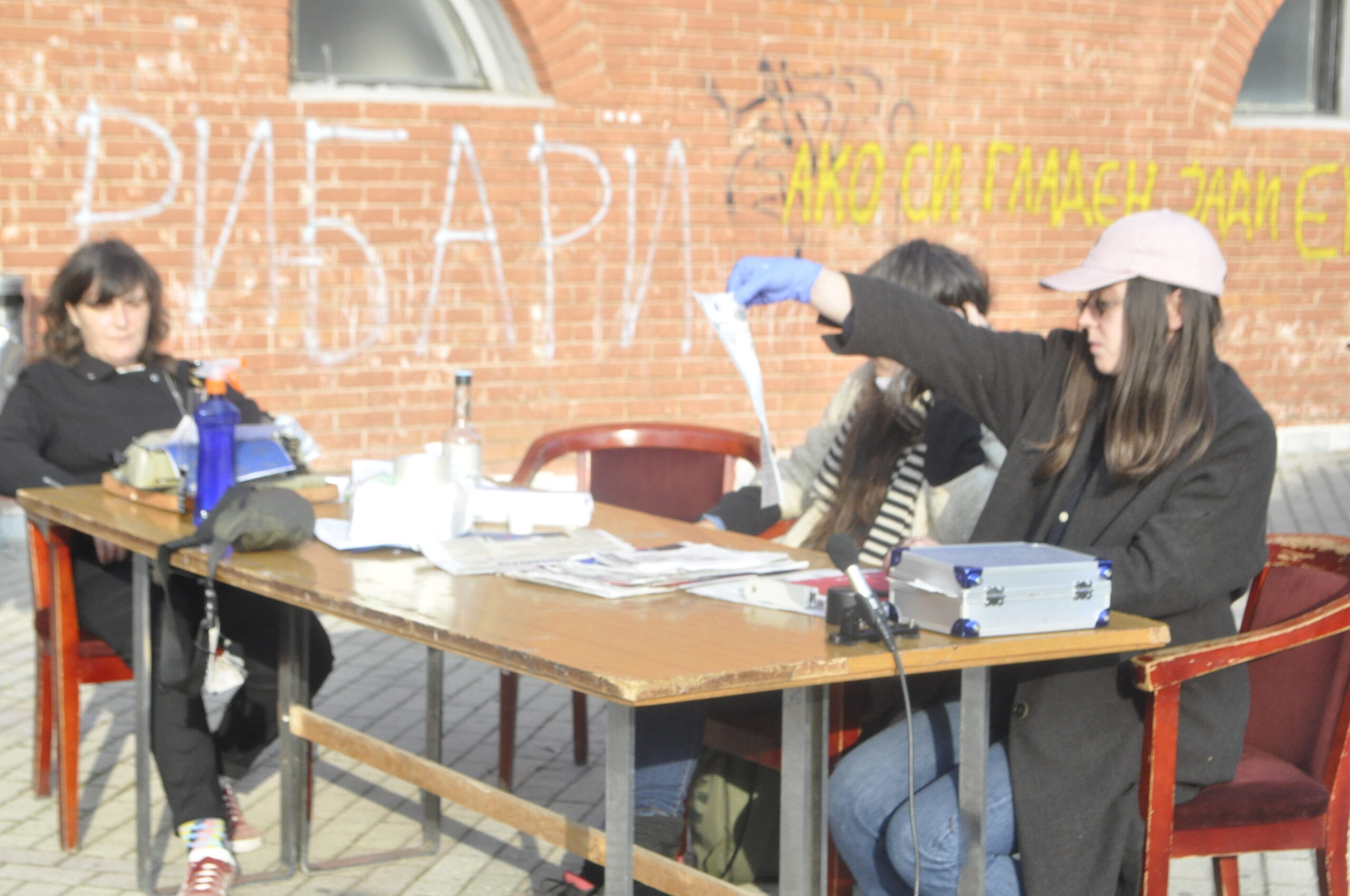
Welcome on board of the ‘WESTERN BALKANS REALITY CHECK – Connecting the dots In-between’ – please tighten your seatbelts and get ready to read amazing stuff.
by: Arlis Alikaj
As part of the Tandem Western Balkans project, two organizations from Serbia, ‘Off The Grid Studio,’ presented by Azemina Halilagić, and ‘Minipogon,’ led by Tijana Cvetković, as well as Kristina Todoroska Petreska, who represents “Association Initiative for independent cultural activism – INKA”, in Struga, North Macedonia, are implementing a project conceived as a tour (in the format of a traveling artistic group) consisting of two separate trips to carry out artistic interventions in public space. The project involves cultural exchange and mapping of communities that remain invisible and which were not given the opportunity to participate in generating dominant cultural trends, in order to get a clearer picture of their needs and preoccupations. Three women want to encourage their involvement through jointly planned artistic interventions put into practice by engaging with simple people in small communities. Those who might be alone or better said ‘forgotten’ people.

Photo by: Arlis Alikaj
They believe that technology may place itself at their disposal. If that possibility would increase, they would give a voice to people who live in the peripheries. As the world went through unusual times because of the pandemic they changed their project a little bit but never gave up!
Through random selection of landline phone numbers from White Pages address books we are getting in touch with very diverse types of people across Serbian and North Macedonian territory who, otherwise we would never be given an opportunity to get in contact, and through an interview/conversation obtain first-hand information of how they approach everyday life in given circumstances, say the three women. I met them virtually for an ashtray conversation (I say this because they were smoking and I felt like it was an ashtray conversation what we call in journalism) via Skype but you know what is said about the ashtrays conversation?! It is believed they are the best.
Was the White Pages address book effective? What did it take to implement a project in two different countries during the pandemic? Was there anything in particular about these towns in the periphery that you needed to reach? Read Azemina, Kristina and Tijana’s interview to find out more.

And this is how it started:Photo Credits: Azemina Halilagic
But first, where did the three courageous women find inspiration to do this project?
The idea was born during the first Tandem session in Belgrade. We simply followed our interests, our artistic approaches and previous experience, and then came out with kinda tailor made project idea, that can represent us individually as well as an artistic collective says Kristina. According to Azemina, the idea was conceived when they came together with similar perspectives on how artists should be more engaged in actions in public space in order to abolish the inclusivity of the art scene. While for Tijana she sums up that they were on the same margins and so they inspired each other to create this project!

Picture taken from Azemina Halilagic’s private album
Why this project exactly?
A: Because this project was developed very organically between our three organizations. We were interested in performing the “Art of destruction” manifest in public space.
K: Three of us got inspired by unheard voices of the ordinary people of the periphery.
T: Exactly this project because three of us were driven by curiosity. For example I was interested to discover more on how people live in the Balkans to see and to learn directly through a road adventure what was happening in the periphery of Serbia and North Macedonia. So it was an opportunity to go and to engage in the places where I don’t go often, somewhere I was even never before, touring in artistic wan. (Smiles).
Was there anything in particular about these towns in the periphery that they needed to reach?
A: We wanted to reach as many peripheral sites as possible. Besides the main three places we are coming from, we wanted to include a wider audience and collect as much data as possible on how people react and perceive art in general.
K: We wanted to reach the narratives of very ordinary people passing by. Narratives that are witnessing the migration of young generations, unrightful processes between state and individual, narratives that are witnessing vulnerability of the people in the state of pandemics. Although we wanted to hear positive narratives, they were rare…
T: Everything about the road trip was special! On the road route from Belgrade to Ohrid and in particular each of these places are either historically, politically or geographically interesting or we had prearranged visits with some culture actors for e.g. in Jagodina and Kraljevo we met with two artists who are struggling with their careers because they were far from the cultural centers.
We wanted to reach the narratives of very ordinary people passing by. Narratives that are witnessing the migration of young generations, unrightful processes between state and individual, narratives that are witnessing vulnerability of the people in the state of pandemics.

Moment from the Women in Action event.
What were some of the project challenges?
A: Covid-19 pandemic because it banned movement and isolation. That’s the main reason for shifting our strategies on landline phone calls.
K: Our major challenge was the pandemic because it affected our tour. We changed plans and adapted our travel way. Luckily the land line calling was a great alternative, although not without challenges because it is rarely used in North Macedonia and we had difficulties reaching the people.
T: Of course the main challenge was the pandemic. We had to adjust our project accordingly and instead of 3 road trips we had just one. The first two trips were to serve as a practise/rehearsal for the final road trip which was also the main tour.

Small talks in the community
What impact did the target community in the project have?
K: Since it is a targeted community project with people from the periphery, it has a direct impact on our artistic work in the project. Through different artistic formats we represented their voices.
A: They were able to voice their opinions and also have a taste of fun, anarchy, and music.
Who was involved in this project?
A: Besides the members of our organizations, we were also connected and networking with local organizations of culture and art.
How does your project ensure sustainability?
K: So far, we have a great archive of audio interviews, photos, and videos, that are serving as a source for production of radio content, fanzin, and graphics. It allows us to work on it, long after the project officially ends.
A: I’m not sure how to answer this question, but I can only say that the more of these artistic actions and practices are being developed the more people can learn how public space can and should be also used for education.
How did you maintain the bridges of cooperation with respective organisations during COVID-19?
A: Hail the internet. We weren’t able to travel but we were able to communicate frequently and immaculately.
Did people get bothered from calling them randomly from the while pages?
K: Well, as I said above in North Macedonia it was very difficult to reach people by landline. Most of the time there was no answer, and people in general were not willing to talk. We were rejected a lot. But those that we reached and managed to talk with, were not bothered at all. On the contrary, we had really good, meaningful and honest conversations.
A: Some people were really interested in sharing their experiences with us, while others were bothered and sometimes hostile.
A message you learnt from each other during this collaboration?
K: I admire the brave spirit of my partners from Serbia!!! It was their encouragement that led to successful implementation, and touring after all.
A: We all have little anarchists lying dormant.

Azemina, Tijana and Kristina walking side by side during their trip
What can you say about each other’s role in this collaboration?
K: We have a very spontaneous, horizontal relation in this project. We cared that each of us felt free to express ourselves and gave our best.
T: The roles came naturally as what our expertise is on what we are interested in. All the participants have equal engagement in the organizational activities, we didn’t have the structure that would imply one person as a manager or a producer. Each of us would do whatever would suit them the best at some moment.
